On-demand water heaters are among the hottest trends in home improvement. Tankless water heaters deliver a virtually endless supply of hot water. They’re also energy efficient and provide a lower cost of ownership than storage systems over their lifespans. Let’s explore a dozen tips to help you get the most out of your new investment.
1. Involve a Professional Installer Early in the Process
Tankless water heater installations are complex, and sizing them can be tricky. DIY projects often cost more than a professional install in the end. We advise consulting with an experienced plumber once you begin considering the purchase. Your installer can help you explore brands and models within the context of your budget. You’ll also benefit from professional advice on sizing, energy efficiency, rebates, etc.
2. Pick the Right Fuel Type
You have the choice of either an electric or fuel-fired tankless water heater. Electric systems are generally cheaper upfront but more expensive in the long term. An exception would be in a smaller home with a relatively low peak demand.
Natural gas is the preferable fuel if you have access to it. If you’ve gained access since your last water heater installation, you’ll have to factor the conversion into the installation costs. The alternatives are propane and fuel oil, which you can store on your property. The ideal choice depends on availability and pricing in your area.
3. Base Your Choice on Energy Efficiency Ratings
Every water heater sold in the U.S. has a yellow EnergyGuide label. It provides all the information you need about how much the water heater costs to operate. That includes the uniform energy factor (UEF), which the industry uses to measure the energy efficiency of water heaters. You can use the UEF values to compare one model to another. You may also want to look for a model with the ENERGY STAR label. That label indicates the unit has met Environmental Protection Agency (EPA) standards through independent testing.
4. Install It Virtually Anywhere
Many homes have a dedicated water heater closet. You won’t need that space any longer. Install it on a wall in the closet. Other options include the garage or attic. It’s even possible to install tankless water heaters outdoors. Doing so adds to the maintenance costs but can lower the plumbing installation costs.
5. Consider Multiple Units for Larger Homes
There are challenges to installing a single tankless water heater in a large home. The problem is finding a location that’s an appropriate distance from all endpoints. A solution is to have one or more primary units and to organize the home into zones. You can also have smaller point-of-use units for showers. This approach significantly increases the initial cost. The benefit is that it improves efficiency and performance and will be cheaper over the life of the equipment.
6. Select an Optimal Flow Rate
The industry measures the capacity of tankless water heaters in flow rate or gallons per minute (GPM). Accurately sizing an on-demand system requires determining your household’s peak demand in GPM. Every fixture and appliance needs a certain flow rate to function properly. Imagine your peak usage is two showers, a dishwasher, a washing machine, and a faucet. You’d combine the required GPM for each to get the needed flow rate.
There’s another consideration with tankless water heaters, which is the option to size for periods of increased demand. If you have college-age children home during the summer or entertain family for the holidays, extra capacity may be nice. That sizing approach isn’t practical with a tank system because you’d pay for it daily. With a tankless system, you pay for it upfront and then only when you actually use it.
7. Think About the Groundwater Temperature
Another reason to consult with a professional is a concept called temperature rise. It’s the difference between the temperature of your water supply and the target temperature of your hot water. Manufacturers rate their tankless water heaters for flow rate at a particular temperature rise. Both values must be appropriate to your home to get the desired performance.
8. Consider the Hard Water Factor
Water hardness refers to the mineral content of your water supply. If you have moderately hard to very hard water, it may decrease the efficiency and lifespan of your system. You will, at the very least, need to schedule yearly descaling of your water heater.
Many plumbers recommend installing a water softener. There are compact anti-scale devices that are relatively affordable. Those only soften the water for the water heater. A whole-house water softening solution will descale all the water that enters your home. It’s more expensive initially but can improve efficiency and lifespan for your plumbing and appliances.
9. Recirculate Pumps and Compact Storage Tanks
A common problem with tankless water heaters is the cold water sandwich effect. It’s most noticeable in showers. You enter a hot shower, which a stream of cold water then interrupts. Many systems now include a recirculating pump or a compact storage tank to avoid this issue.
Another common inconvenience is a long hot water delay. This is a concern in larger homes for reasons mentioned earlier. Opting for a pump, tank, or both may avoid the need to install multiple water heaters.
10. Choose Added Features
Standard tankless water heaters are non-condensing systems. High-efficiency tankless water heaters are condensing systems. These systems trap condensation rather than releasing it to help heat the water. They also have a second heat exchanger that claims heat from the exhaust gases. These added features add to the initial cost but can save you in operating costs and with rebates and tax credits.
11. Research Rebates and Tax Credits
There are tax credits and rebates available that can help you offset the initial investment. These incentives typically require you to purchase a system with ENERGY STAR certification. You can check the EPA website for rebates by zip code. You should also check with your local utility companies. The federal tax credit is worth 30% of your total installation costs up to $600 and is available in addition to any rebate.
12. Purchase Your Heater Through an Authorized Dealer to Get Full Warranty
It’s important to purchase your tankless water heater through an authorized dealer. Many brands do not provide coverage for units sold outside their networks. You must also register your purchase with the manufacturer, usually within 90 days. Take your time comparing warranties, as there is significant variance among tankless systems. Coverage ranges from one year to 25, and many brands offer the option to extend the coverage.
Would You Like to Install a Tankless Water Heater?
Bryant Heating, Cooling, Plumbing & Electric has served homeowners in Indiana, Kentucky, and Ohio since 1940. We have locations in Bowling Green, Evansville, Florence, Lexington, and Louisville. Our plumbers install and service all makes and models of tankless and tank water heaters. We also specialize in camera inspections, drain cleaning, sewer services, sump pumps, water treatment, and bathroom and kitchen plumbing. Our electricians perform electric repairs and installations. That includes panels, GFCI outlets, surge protection, indoor and outdoor lighting, EV chargers, smoke detectors, and generators. Our HVAC technicians install and service all ducted and ductless heating and cooling systems. We also specialize in ductwork, whole-house fans, air purifiers, dehumidifiers, humidifiers, and smart thermostats. Call today or contact us online to schedule an appointment.



